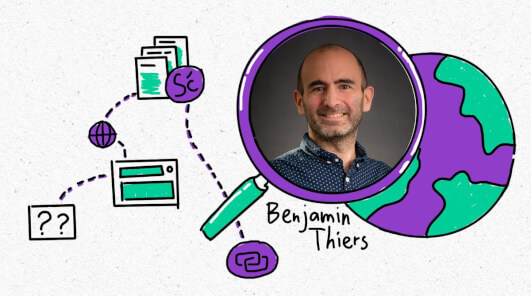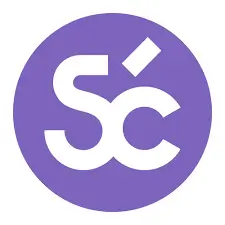The author of this article, Benjamin Thiers has been working in SEO since 2003. Author of several books in French on digital marketing, he is also responsible for search content marketing for the Digimood agency.
Good SEO can help you multiply your sales and turnover when expanding into other countries. Here are the five steps you should follow to improve your international SEO.
Ask yourself the right questions before going international
Before considering any international deployment strategy, you need to evaluate your motivations and your ability to serve new markets.
The language barrier goes beyond translation. A platform like Smartcat will meet your SEO translation needs when it comes to localizing your website, but have you thought about how you will interact with your customers in these new markets? You’ll have to process requests and answer questions in French, German, Chinese, Spanish, or any other languages natively spoken in these markets. Ideally, this means getting native speakers to join your team.
Specific markets require specific skills. Want to enter European markets? In that case, you have to comply with the GDRP (General Data Protection Regulation), a data protection and privacy regulation that applies to all countries in the European Union. This means you’ll need the right tech and EU law expertise to get your website in shape and comply with all local regulations, so you’ll probably have to hire a specialist or find the right external provider to help you meet all legal requirements.
Map out the logistics. Good planning is decisive to successfully develop your business internationally, especially if you have an e-commerce site. Before positioning yourself in a new market or in a new language, look into the implications of the different delivery methods, choice of service providers, pricing options, customs, and other considerations that might be different locally.
Once you’ve taken all these factors into account, it's time to work on getting yourself onto the first page of search results! Here’s how to successfully execute a winning SEO strategy internationally.
Choose the right domain name for your international site
Choosing a domain name is an important first step when going global.
You will usually choose from among three types of domain name extensions:
Generic top-level domain (gTLD): generic domains can either be purchased by anyone (.com, .org, .net), or be reserved for certain entities (.edu, .aero, etc.).
Country code top-level domain (ccTLD) are associated with a country. For example, .us for the United States, .de for Germany, or .fr for France. In some countries, specific conditions have been introduced to control how these are awarded.
New top-level domain (nTLD): new extensions have appeared in recent years, like .space, .store, or .tech.
Your choice of domain name extension can have a lasting impact on your international SEO strategy, so you should carefully consider all options.
Country code top-level domains (ccTLDs)
Search engine algorithms associate a ccTLD with a country. However, exceptions exist when country extensions happen to be associated with other meanings. For example, the .fm extension, for example, applies to the Federated States of Micronesia, but is frequently used by radio stations. Similarly, the .tv extension applies to the Tuvalu Islands, but is often used by TV channels. Check out the list of ccTLDs managed by Google.
If you want to expand internationally with ccTLDs, this means you have to get the corresponding ccTLD for each country. Amazon, for example, has successfully adopted this strategy.
This approach can get you good SEO results, but is not recommended for several reasons:
Extensions for some countries may not be available.
You might not be able to meet the specific criteria for some countries.
The more country extensions you use, the more expensive it can be.
You need to buy and renew several domain names every year.
Generic top-level domains (gTLDs) or new top-level domains (nTLDs)
If you choose a generic extension, like .com you can easily implement an international SEO strategy with dozens of different versions. There are two main options available:
A subdomain for each version (https://en.monsite.com, https://fr.monsite.com, etc.);
Recommended: a directory for each version (https://www.monsite.com/en/, https://monsite.com/fr/, etc.)
Preferred by many sites and by the biggest brands, directories are simpler to manage, and, with the right SEO, are viewed positively by search engines.
Create localized versions of your URLs
To position yourself internationally, you will need to create localized versions of your different URLs.
SEO-friendly URLs
If you opt for directories, you should use the following ISO codes:
ISO 639-1 for the language (https://www.website.com/en/, https://www.website.com/fr/, etc.)
ISO 3166-1 Alpha 2 for the country (https://www.website.com/gb/, https://www.website.com/fr/, etc.)
If you have both a multilingual and a multiregional site, you will need to choose between the following schemes:
/language-country/ (https://www.website.com/fr-ca/, https://www.website.com/en-ca/, etc.)
/country/language/ (https://www.website.com/ca/fr/, https://www.website.com/ca/en/, etc.)
You should also remove any URLs with parameters, such as /page1.html?ver=en.
Using hreflang attributes
The purpose of hreflang attributes is to let search engines know about any regional and language versions of your content. You can add them:
to each web page, between the tags <head></head>
in a sitemap file
If you’re editing a website that’s available in several languages, say English, French, and German, you’ll have the following for each web page:
<link rel="alternate" href=”https://www.website.com/page1.html ” hreflang="en” />
<link rel="alternate" href=”https://www.website.com/fr/page1.html ” hreflang="en” />
<link rel="alternate" href=”https://www.jules.com/de/page1.html ” hreflang="from" />
<link rel=”alternate” href=https://www.website.com/page1.html ” hreflang="x-default” />
The tag with the attribute hreflang="x-default" is the default page, which is what’s displayed when the user speaks a language other than the ones you have created versions for.
Create optimized content in every language
Content is at the core of a succesful SEO strategy. And it also plays a key role in the user experience. Poorly translated content will affect both SEO and the user experience, which can have a negative effect on your conversion rates and, ultimately, your bottom line.
Only one language per page
Search engines, including Google, can automatically detect the language content is in, provided that all content is translated! Each web page should have content in one language only, so make sure you’re translating everything, including menu items, headers and footers, and any other sections, as trivial as they may seem.
SEO-optimized content
Create SEO-optimized content for each language. Pay attention to all details, including the title tags and headings tags (<H1>, <H2>, etc.).
To make this process easier you can always work with a freelance native professional or a specialized agency. You could also use a comprehensive solution like Smartcat, where you can get high-quality translations, that are both UX and SEO-friendly, at an attractive price.
Get quality links in each country
Once you’ve created SEO-friendly URLs and optimized your content, you need to move on to the 3rd lever of SEO, popularity. This involves getting links from third-party sites to the different versions of your site.
For optimal results follow these three tips.
Referring domains in the same language
A referring domain is a domain hosting at least one hyperlink to your site. So, if Amazon.com has a link to your website, it becomes a referring domain.
You can boost the visibility of each version of your site by getting links from referring domains in the same language. Are you boosting a French-version website? Try to get links from French-language referring domains or from their French-language versions.
The more landing pages the backlinks lead to, the better. So, get links to your home page and deep pages, for example, to https://www.website.com/fr and https://www.website.com/fr/categorie/produits-1/.
Relevance of referring domains
The referring domains that link back to your website should be of a similar theme to yours. Own a horse saddles website? Get links from riding blogs, horse riding centers, sites about equestrian tourism, etc. This way you strengthen your authority in your field, and this is picked up by the search engine algorithms.
Quality over quantity
Some webmasters try to trick the system by artificially inflating the number of backlinks. All they have to do is register on directories and they can buy thousands of links on site networks, or automatically create hundreds of blogs.
But search engines are aware of these practices and fraudulently acquired links may be subject to penalties, which can affect your positioning on search results.
To sustainably establish your visibility internationally, you need to get links from quality domains, which themselves benefit from good SEO practices. So, focus on providing good content, whether it’s on your site or by guest blogging, and other sites will be glad to link back to your website.
Subscribe to our newsletter


